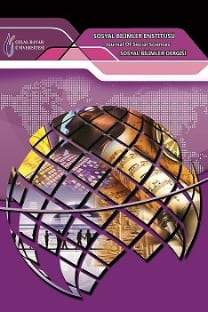D. H. LAWRENCE’S USAGE OF ARCHETYPES IN LADY CHATTERLEY’S LOVER
ABSTRACTThe present analysis is intended to shed some light on D. H. Lawrence’s use of myth, recurrent mythical images and archetypal patterns in his work, Lady Chatterley’s Lover. This study analyses D. H. Lawrence’s archetypal images making particular references to his work. The study is confined to the functions and significance of the mythical images and archetypal patterns represented in the aforementioned work. D. H. Lawrence tried to reflect the insecurity and rootlessness of modern life through archetypes; he showed modern man who has become alienated from himself and nature. The method used is archetypal criticism; it deals with archetypes which are primordial images perceived across cultures, inherited from time immemorial, issuing from a ‘collective unconscious’. An archetype is a mythic symbol, which is deeply rooted in the unconscious, more broadly based on a foundation of universal nature than an ordinary literary symbol, and is more generally expressive of the elemental in man and nature.
- ISSN: 1304-4796
- Yayın Aralığı: Yılda 4 Sayı
- Başlangıç: 2003
- Yayıncı: Manisa Celal Bayar Üniversitesi
Sayıdaki Diğer Makaleler
ÂSAF HÂLET ÇELEBİ’NİN BÜTÜN ŞİİRLERİ’NİN YENİ BASKISI ÜZERİNE
AKHİSAR ARKEOLOJİ MÜZESİ’NDE BULUNAN UNGUENTARİUMLAR
KAZIM KARABEKİR’İN ESERLERİNDE ALMANLAR VE ALMANYA
GELENEKTEN GELECEĞE: DEDE KORKUT KİTABI
SELAM KADİRZÂDE’NİN “EVLAT” ADLI HİKÂYESİNDE YABANCILAŞMA
Didem ÖZER ÇAYLAN, Verda AKPINARLI, Durmuş Ali DEVECİ
YİRMİNCİ ASIR TÜRK EDEBİYATI YAZARI DR. OTTO HACHTMANN’A GÖRE MEHMED ÂKİF
